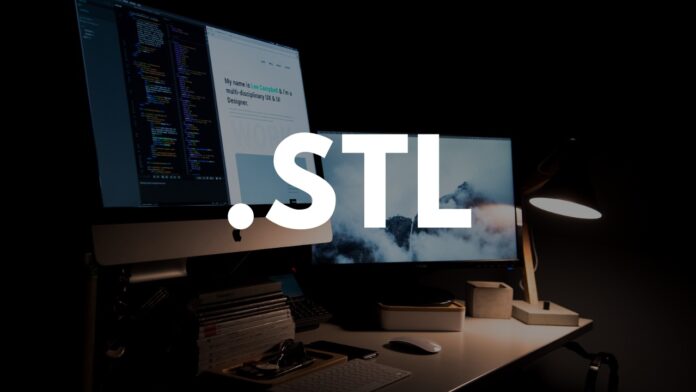Have you ever wondered what 3D printers read? Odds are you’ve heard of STL files, a unique format integral to digital design and 3D modeling. Join us as we demystify the world of STL files and explore how they influence the future of design.
STL Files Demystified: A Closer Look
STL files, short for Stereolithography files, are a workhorse in the world of additive manufacturing, the process behind 3D printing. Falling under the category of CAD (Computer Aided Design) files, STL files provide detailed instructions for 3D printers to replicate three-dimensional objects layer by layer.
The Anatomy of STL Files
What distinguishes the STL file format? It’s all about triangles. The STL file contains data that breaks down the surface of a 3D object into a myriad of tiny triangles. The number of triangles can range from a few to millions, depending on the complexity and precision of the model.
An STL file contains two types of information:
- The coordinates of each vertex of the triangle
- The direction of the normal vector (which determines the ‘outside’ and ‘inside’ of the object)
This simple but effective strategy allows the creation of intricate digital and physical constructs.
The Interface: Binary vs ASCII STL
STL files come in two formats: Binary and ASCII (American Standard Code for Information Interchange). Despite a difference in file size and readability, both formats serve the same purpose.
Binary STL
Compact and efficient, binary STL files are a popular choice in 3D design. They take top scores for space management since their encoding method allows for smaller file sizes, making them easier to store and transfer.
ASCII STL
In the other corner stands ASCII STL. These files are human-readable as they are encoded in plain text. They allow users to troubleshoot and modify the file manually if required. Their downside? The file size could be up to six times larger than that of binary STL files.
Importance of STL Files in 3D Printing and Beyond
Lightweight and effective, STL files sit at the nucleus of additive manufacturing. From the latest smartphone cover to intricate architectural models – an STL file is at work.
Role in Additive Manufacturing
In the realm of 3D printing, STL files assume the role of a blueprint. They encode the surface geometry of the product to be manufactured, guiding the 3D printer to layer material and build the object from scratch.
Expanding Frontiers: Virtual Reality and Simulation
STL files are not confined to the world of 3D printing. Their scope extends to the evolving sectors of virtual reality and simulation. They facilitate rigorous testing and fine-tuning of designs in these environments prior to actual production.
“STL files are the hardworking heroes that bridge design and production in the 3D modeling world.”
Things to Consider when Working with STL Files
Handling STL files requires an understanding of certain nuances. Here are some pointers to remember, whether you’re a newbie or a seasoned STL user.
Know Your 3D Software
Each 3D modeling software has its unique way of exporting STL files. Understanding this process can ensure the preservation of detail, and most importantly, the functionality of your file.
Mind the Normals
As we mentioned earlier, the normal vectors in an STL file determine the orientation of the object. Misaligned normal vectors can lead to fabrication errors.
Balancing Quality and Size
The quality of an STL file (consequently, the precision of your 3D print) depends on the number of triangles used to describe your object. However, too many triangles can lead to a bulky file which could slow down processing or even cause crashes.
In Sum
In the intricate pipeline of digital design and manufacturing, STL files play a pivotal role. They serve as a digital mold, seamlessly bridging the gap between a designer’s vision and a tangible product. Regardless of whether you’re a digital design enthusiast or a professional in the field, a sound understanding of STL files is a solid foundation to create and innovate effectively.
As we cruise further into the future, the influence of STL files is set to extend way beyond 3D printing into more technologically advanced territories. So, it’s about time we all got better acquainted with the humble STL file – the silent enabler of our 3D dreams.










